Propelling a transformed future in healthcare
A look at the latest, as noted from Mayo Clinic’s Investment in Healing Conference
Across all sectors, organizations are rapidly unlocking the growing potential of technology and big data to innovate in new ways, with global impact. The potential for virtual health, wearables, machine learning and AI is tremendous, and Mayo Clinic is steadfast in its efforts to deliver these needed advancements.
Hosted by Business Development in October 2024, the second Mayo Clinic Investment in Healing Conference brought together medtech CEOs, entrepreneurs, investors and leaders to discuss the pivotal transformations unfolding in healthcare.
What we heard:
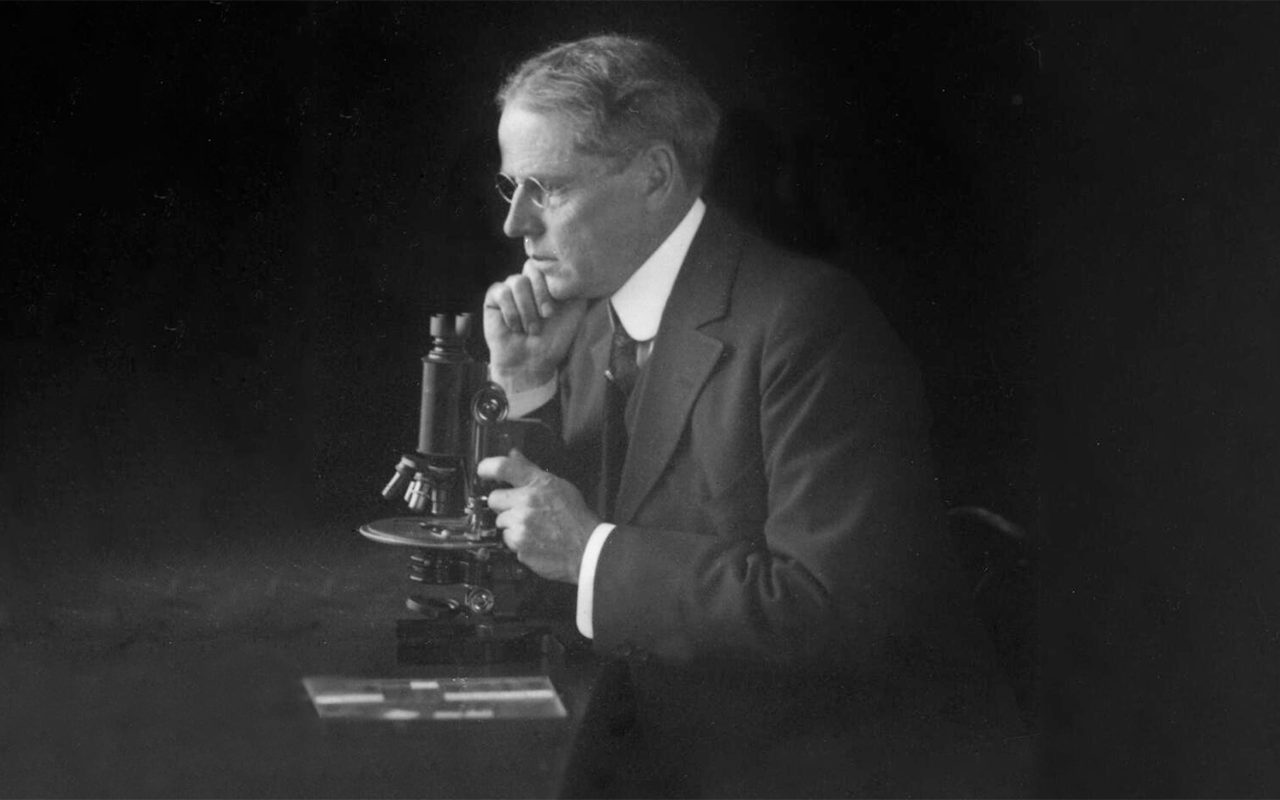
Frozen section technique revolutionizes surgery. Mayo Clinic pathologist Dr. Louis Wilson made it possible to explore, diagnose and remove canerous tissue all in one operation.
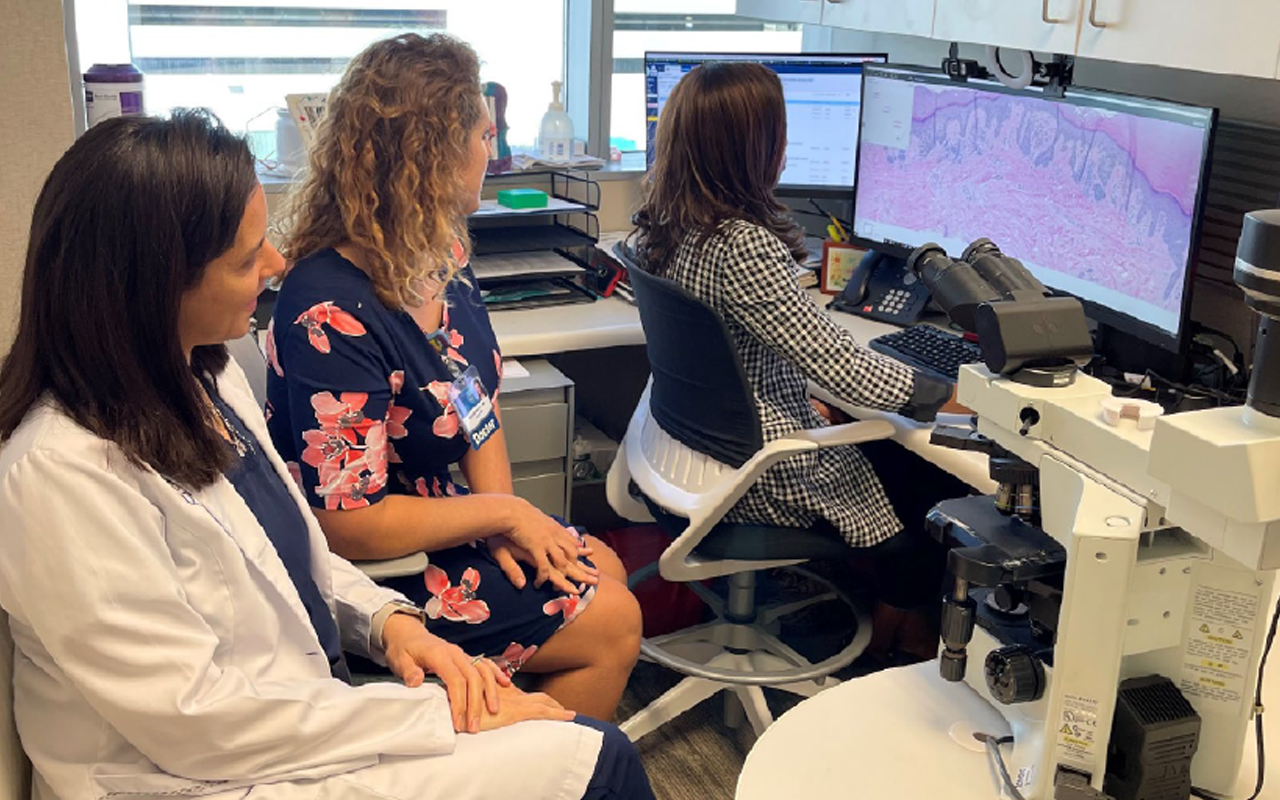
As part of its digital health and clinical practice transformation, Mayo Clinic has incited a multiphase digital pathology initiative to include the digitizing of 12 million slides.

Dr. Henry S. Plummer launched the creation of a central file in which individual folders containing each Mayo Clinic patient’s medical information would be housed, marking the inception of Mayo medical records.
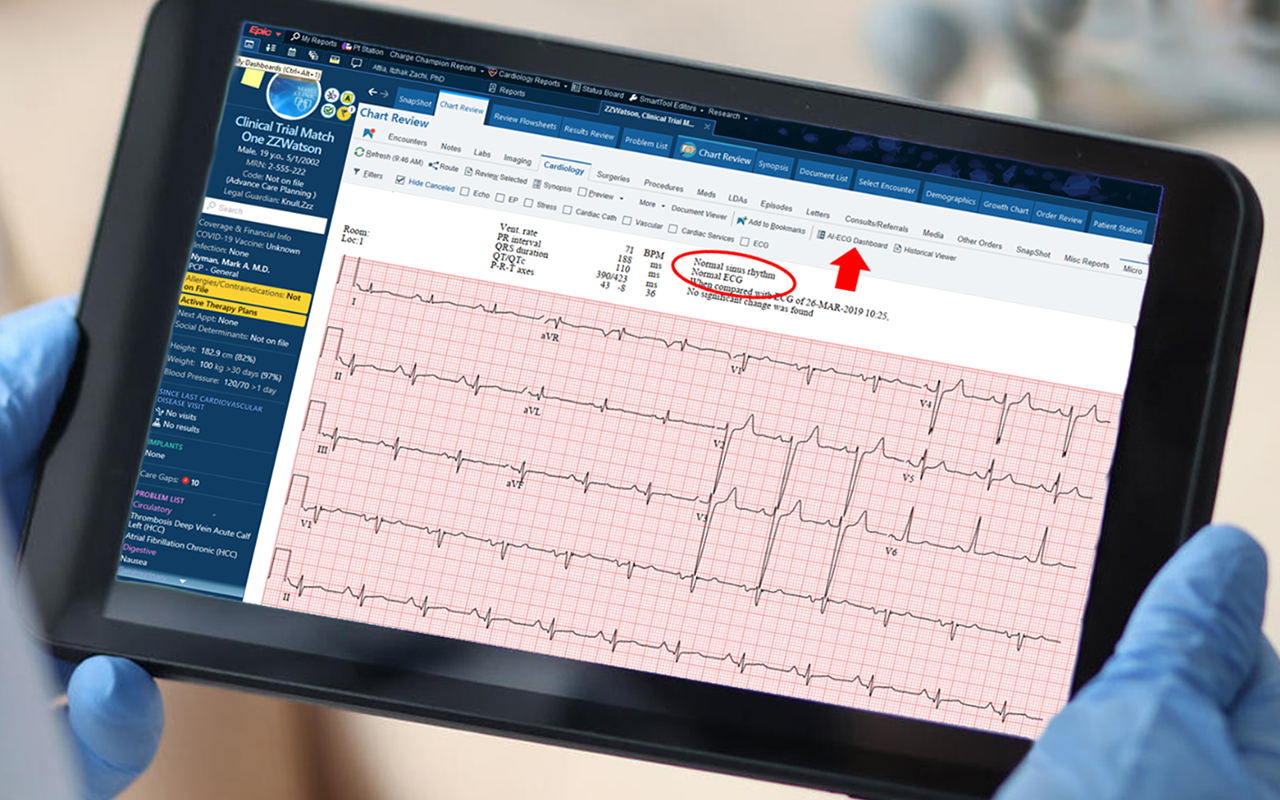
Leveraging Mayo Clinic Platform in conjunction with generative AI capabilities, Mayo Clinic is deploying innovative methods for using patient data to create personalized and predictive care while alleviating administrative burden on staff.
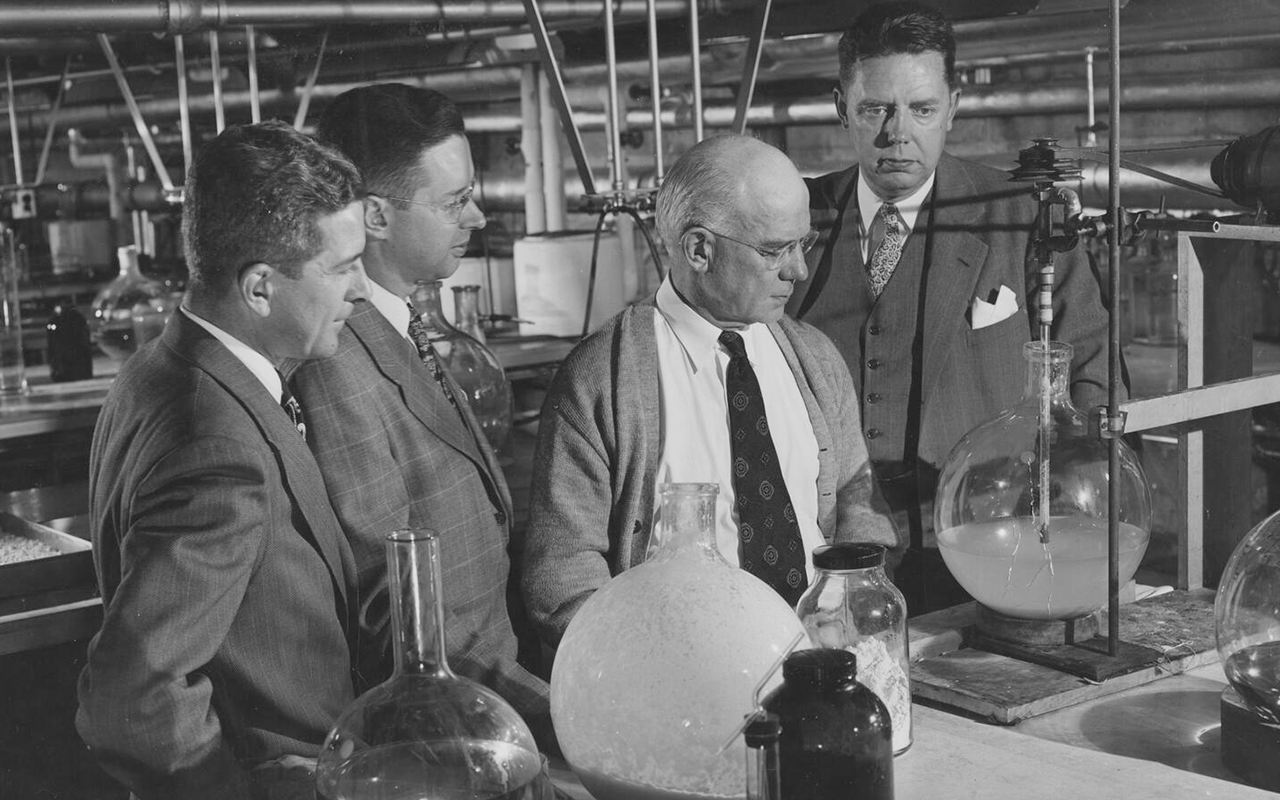
Mayo Clinic scientist Edward Kendall, third from right, and Mayo Clinic rheumatologist Phillip Hench, far right, shared the Nobel Prize for discovering cortisone with Merck.
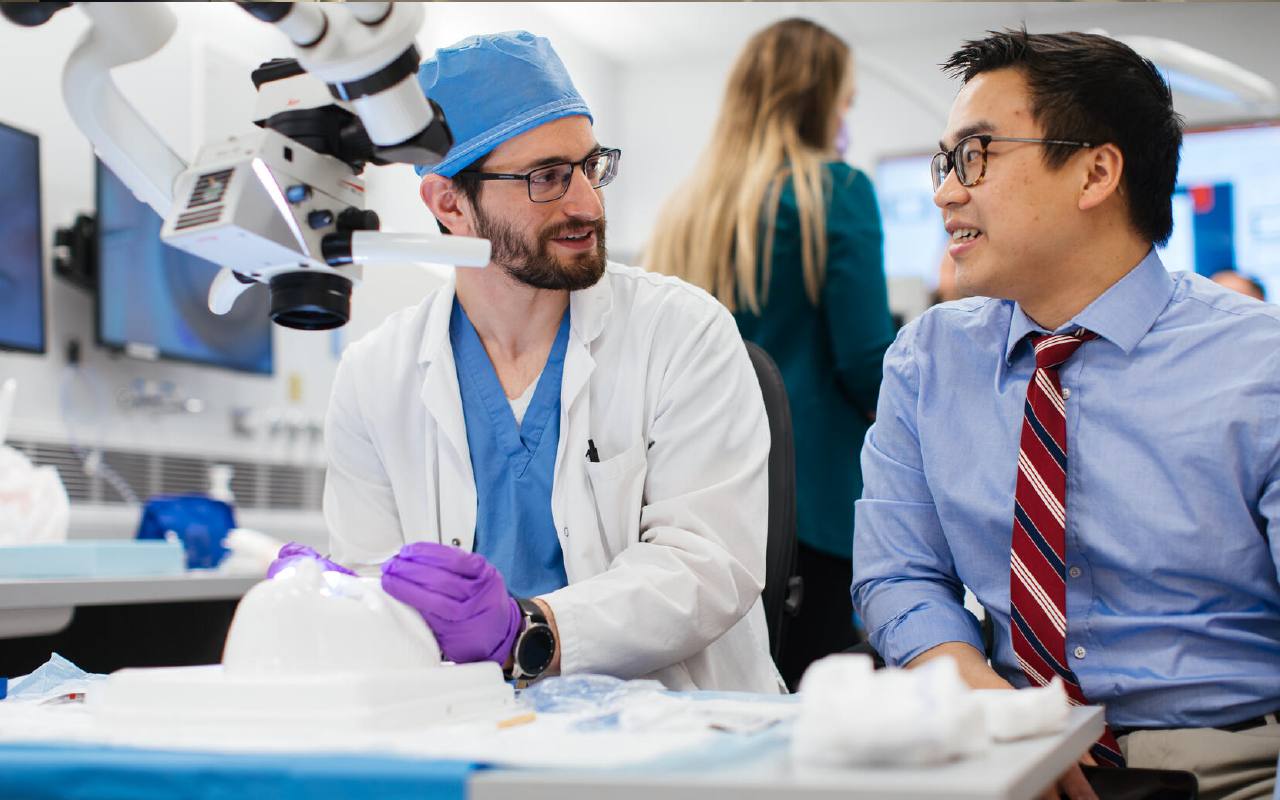
Strategic and impactful collaborative efforts amongst Mayo Clinic’s three shields and external entities continues to be an integral part of the organization’s success in creating new solutions for patients.
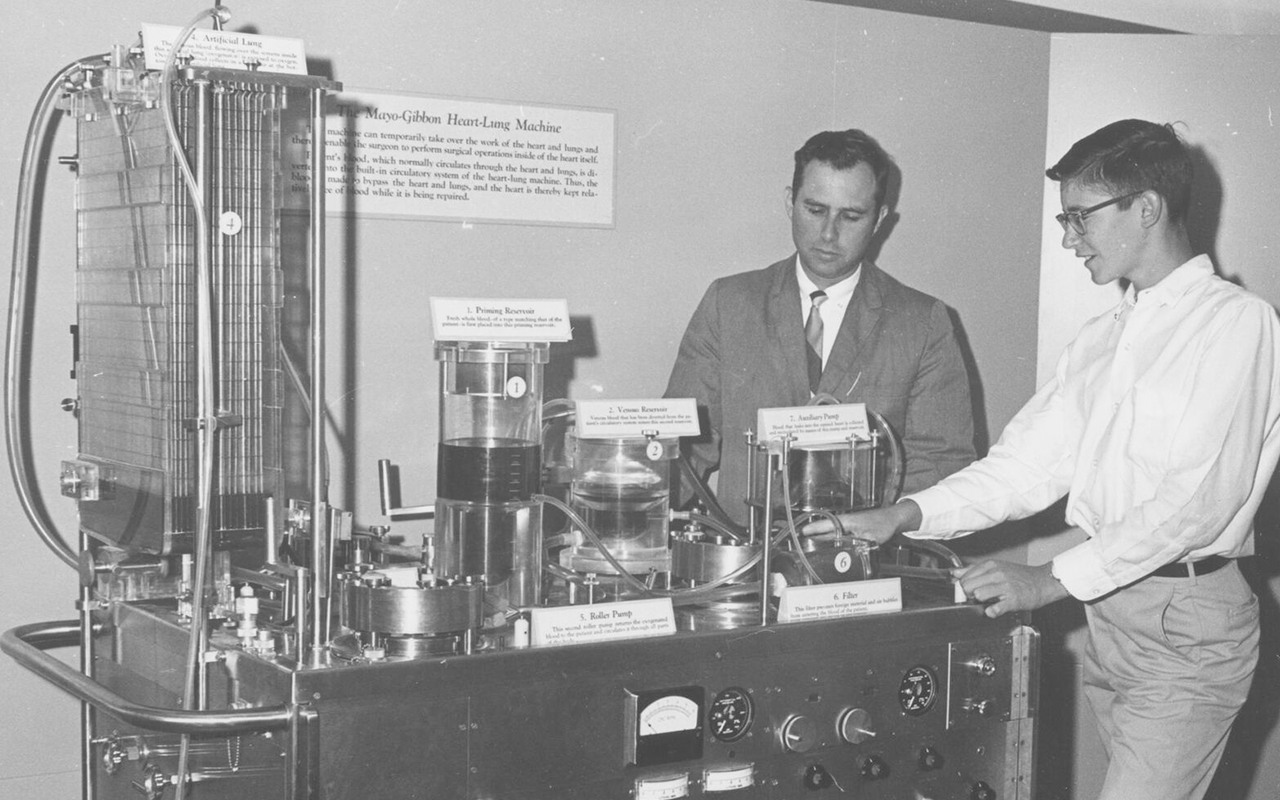
Mayo Clinic surgeon John Kirklin created the Mayo-Gibbon Heart-Lung machine, enabling life-saving surgeries that are now commonplace.

Mayo Clinic is pairing augmented reality with surgical navigation to provide surgeons with revolutionary 3D “X-ray vision” through the skin for minimally invasive procedures.
Generative AI and digital pathology are chief focus areas for Mayo Clinic, and through the organization’s Business Development arm, collaborations are crucial to making headway.
Jim Rogers, former Mayo Clinic Chief Business Development Officer, current Senior Administrator for Generative AI and newly named CEO of Mayo Clinic Digital Pathology, highlighted how early breakthroughs, such as the 1905 frozen section technique and the 1954 Mayo-Gibbon Heart-Lung Machine, can be compared to current advancements in digital pathology and AI-driven patient care.
“We’re going to work to reduce administrative burden, improve the practice, and throughout all make sure we’re transforming healthcare; that we’re driving innovations out to the world. It’s critically important that we do that, and that we don’t lose sight of that.” – Jim Rogers
AI is a tool driving precision medicine
Kimberly Powell, NVIDIA’s Vice President of Healthcare, discussed the history of NVIDIA beginning with graphics processing chips, which led to the need for predictive computational programs, and then to the hardware supporting the modern algorithms we now call AI.
With healthcare undergoing an industrial revolution, algorithms are creating new levels of precision and personalization in medicine. The potential applications of AI for driving innovation across medical imaging, life sciences, drug discovery and healthcare analytics is vast.
“We absolutely believe at NVIDIA that the most important application of AI is in healthcare and life sciences.” -Kimberly Powell
John Halamka, MD, President of Mayo Clinic Platform in a fireside chat to discuss AI potential, safety, current and future uses of the rapidly evolving technologies being developed.

AI & tech revolution: Expectations, reality and caution
‘How do we reduce the administrative load, while on the patient side making it a better experience for them?’ is a question that continues to surface.

Matthew Callstrom, MD, Mayo Clinic’s Medical Director of Strategy, led a discussion with Shiv Rao, MD, CEO of Abridge, Sofia Guerra, VP of Bessemer Venture Partners, Ajit Singh, PhD, Partner at Artiman, Justin Butler, Partner at Eclipse and Phil Lindemann, VP of Data & Research at Epic, on the current state of healthcare, investment trends, new technologies and some of the potential opportunities and challenges in making an impact in this rapidly developing space.
Two key imperatives surfaced: 1) Reducing administrative load and, 2) enabling healthcare providers to spend more time with patients to enhance their experience.
Epidemiology of health longevity
Larry Brilliant, MD, CEO of Evity Technologies, a startup at the intersection of epidemiology, health span, and artificial intelligence, spoke on the history of epidemiology, its impact on public health, and how new technologies are evolving the field. He focused on what he refers to as an epidemiological transition, where the causes of death and disease patterns in a society progresses from infectious disease to chronic disease, characterized by improved overall health in a population, better health services, decreased mortality and increased life expectancy.
Discussed at length was the impact advancing technology has had on public health in his lifetime, and what he saw as opportunities and challenges of incorporating new algorithms into medical tools.
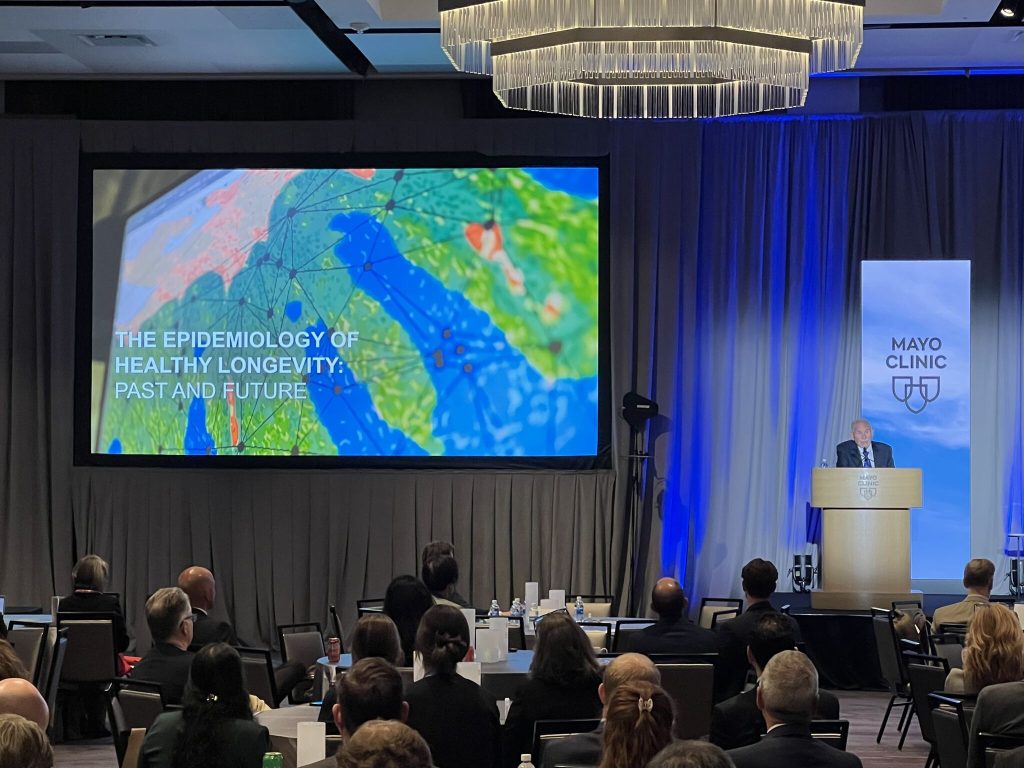
“We will be able to improve health span. We have so many more tools, and AI will play a part in that.” – Larry Brilliant, MD
Evolving models of drug development
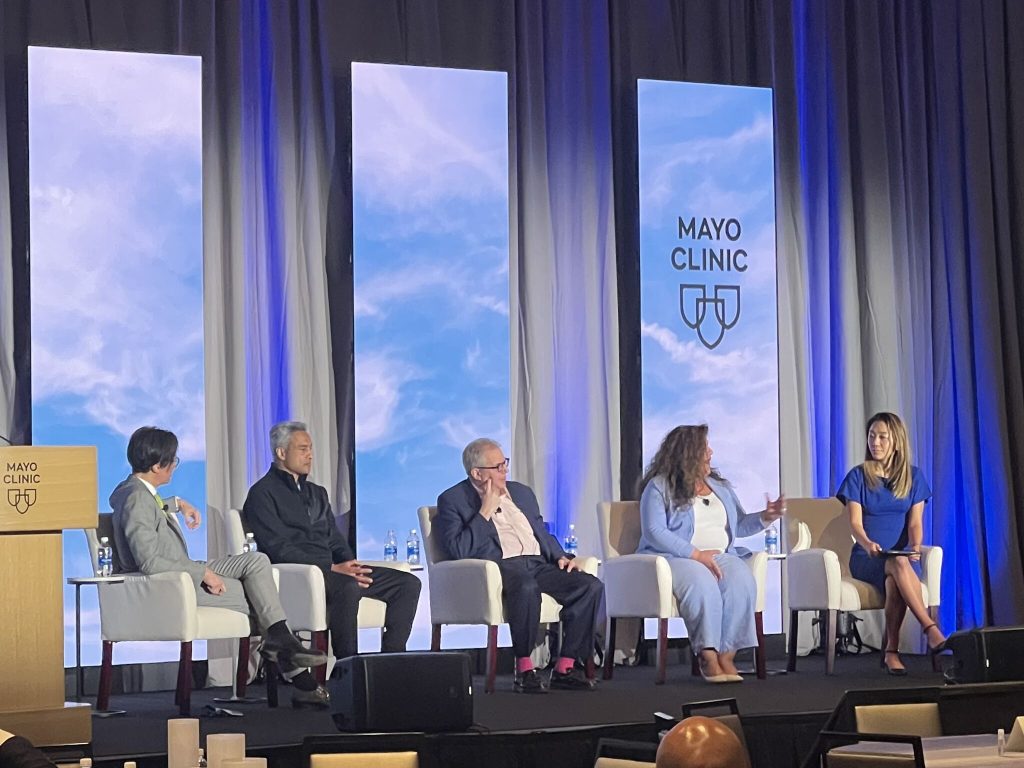
Pharmaceutical industry experts Rana Lonnen, PhD, Managing Director at Novartis, Ned David, PhD, Managing Director at Jupiter Bio, Cony D’Cruz, Founder and CEO at Superluminal Medicines and Les Funtleyder, Portfolio Manager at ESquare Capital and Leighanne Oh, MS, Vice President at Ascenta Capital, discussed the evolution of drug modeling and the potential that new technological advancements bring for the future.
“It’s the speed of these advances that is incredible. I’m continually surprised by the rate of improvement.”
Automated systems are poised to enhance the rigor with which new drugs are tested while getting new cures to patients faster.
Clinical trials – yesterday, today and tomorrow
Owen Garrick, MD, Dean of Clinical Trials at Mayo Clinic, Joe O’Rourke, Head of Commercial Development at Walgreens, David Stevenson, COO and Managing Director at Merck Global Health Innovation Fund and Brittany Erana, VP at Patient First Digital Solutions, PPD, and Tony Sun, MD, founder of Essex Group came together to discuss what has, does, and is likely to make an efficient, successful clinical trial as we step into the future.
“Taking longer due to increased protocol complexity and insistence on greater accuracy and specificity does not necessarily indicate a procedural failure.”
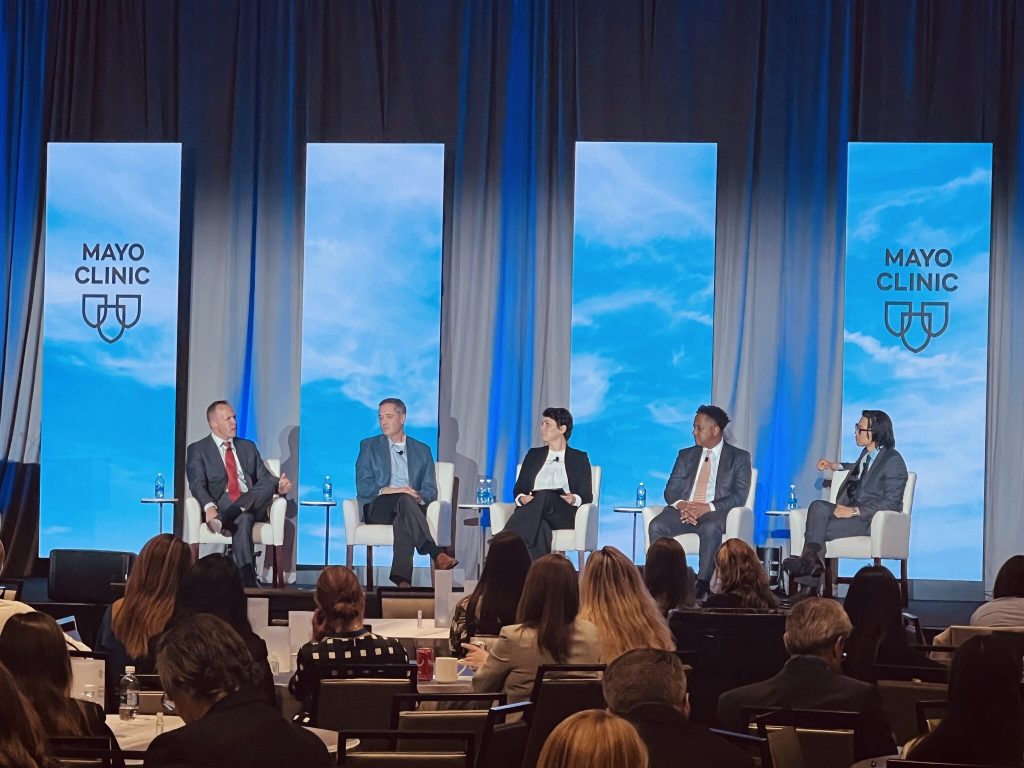
Enthusiasm was shared for the technological advancements allowing higher degrees of complexity in trials, while improving accuracy and specificity in studies, concluding that there was great potential for new breakthroughs in clinical trials; all with the goal of getting new cures for patients.
